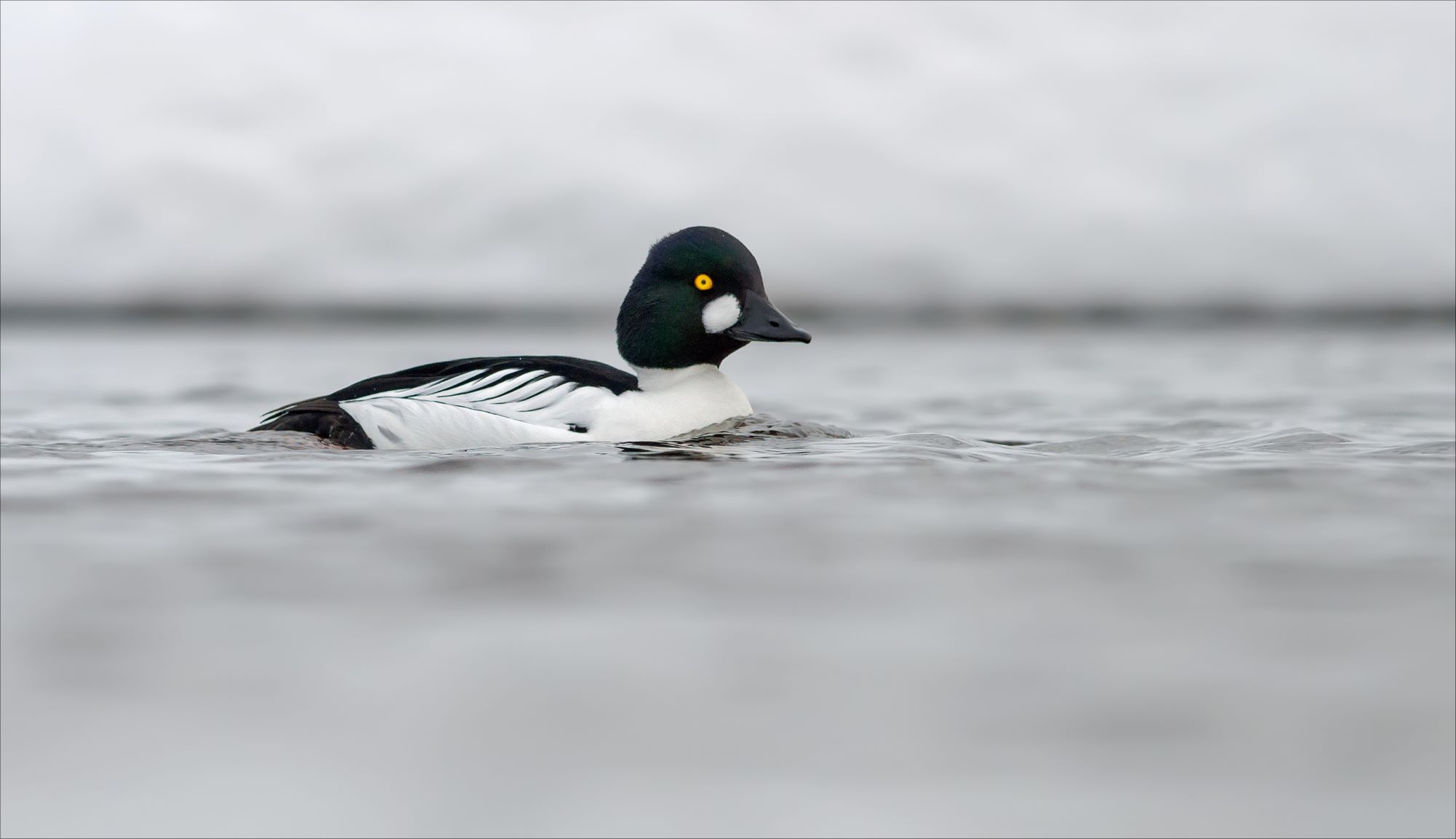
Common Goldeneyes in Utah
Common Goldeneyes, a striking species of diving ducks, are a notable feature in Utah's birdlife, especially in the state's larger lakes and reservoirs. Known scientifically as Bucephala clangula, these medium-sized ducks are easily recognizable by their distinctive appearance. Male Common Goldeneyes have glossy green-black heads with a prominent circular white patch between the eye and bill, bright yellow eyes, and contrasting white bodies with black backs. Females are more muted in color, with brown heads and gray bodies, but they also possess the characteristic bright yellow eyes, lending the species its name. In Utah, Common Goldeneyes are most commonly seen during the winter months when they migrate south from their northern breeding grounds, adding to the diversity of waterfowl in the state's aquatic habitats.
The feeding habits of Common Goldeneyes are specialized and highly adapted to their aquatic environment. They are primarily piscivorous, feeding on a diet of fish, but they also consume aquatic invertebrates such as insects and crustaceans. These ducks are skilled divers, capable of plunging deep underwater to forage for food. In Utah's lakes and reservoirs, they contribute to the ecological balance by controlling fish and invertebrate populations. Observing a Common Goldeneye dive and resurface is a testament to their prowess as aquatic hunters, showcasing their important role in the food web of Utah's water bodies.
While Common Goldeneyes are not typically breeding residents of Utah, their presence during the winter months is significant. During this time, they can be seen in flocks, sometimes mixed with other species of diving ducks, adding to the dynamic birdwatching opportunities in the state. These winter gatherings are crucial for the ducks to conserve energy and stay warm, and they provide a spectacle for birdwatchers, showcasing the diversity of migratory patterns and behaviors among waterfowl.
Conservation of suitable aquatic habitats is vital for the survival of Common Goldeneyes during their winter stay in Utah. These environments provide the necessary resources for feeding and resting, crucial for the ducks as they endure the colder months. Threats such as pollution, habitat destruction, and changes in water levels can significantly impact the quality of these habitats. Efforts to protect and manage Utah's water bodies are essential in ensuring the health and continued presence of Common Goldeneyes and other migratory waterfowl.
For bird enthusiasts and nature lovers in Utah, the Common Goldeneye offers an exciting wildlife viewing experience. Their striking appearance, diving skills, and the role they play in the aquatic ecosystem make them a fascinating subject for observation and study. The presence of Common Goldeneyes in Utah's lakes and reservoirs during winter is a reminder of the interconnectedness of migratory bird species and the importance of conserving natural habitats along their migratory routes. Observing these ducks in their winter habitats is not only a delight for birdwatchers but also an opportunity to appreciate the complex ecological relationships that sustain Utah's diverse wildlife populations.